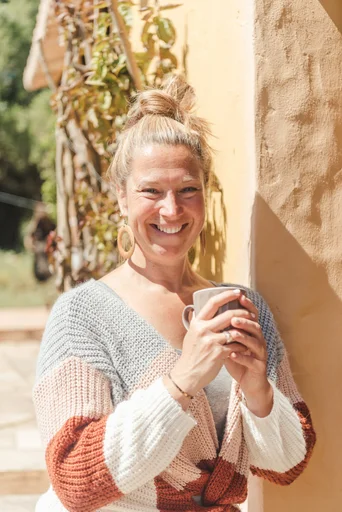Yogic Practices to Prepare for Labor & the Fourth Trimester - Yoga Journal

Introduction to Yogic Practices for Expectant Mothers
As an expectant mother, the journey of pregnancy and childbirth is both exhilarating and challenging. Embracing Yogic Practices during this transformative time can offer a multitude of benefits for both the mind and body. Prenatal yoga, in particular, has been shown to be a valuable tool in preparing for labor and embracing the fourth trimester.
The Importance of Prenatal Yoga
Prenatal yoga is not just about physical exercise; it's a holistic approach to nurturing your well-being during pregnancy. Research has indicated that regular yoga practice in the last 10 to 12 weeks of pregnancy improves maternal comfort in labor and may facilitate labor progress. In fact, one study found that the "yoga" group experienced approximately two-and-a-half hours shorter first stage of labor than the "non-yoga" control group. This highlights the significant impact that Yogic Practices can have on the childbirth experience.
Furthermore, prenatal yoga has been associated with reducing pelvic pain, improving mental and physical condition, and enhancing perinatal outcomes. It also plays a pivotal role in lowering levels of pain, stress, anxiety, and depression in pregnant women. These findings underscore the profound benefits that prenatal yoga can offer expectant mothers as they navigate through this unique phase of life.
What to Expect in This Blog
In this blog, you can look forward to a blend of personal stories from individuals who have embraced Yogic Practices during their pregnancies along with expert insights from healthcare professionals specializing in prenatal care. Additionally, practical tips and techniques will be shared to empower you on your journey through pregnancy and into motherhood.
By delving into personal anecdotes and evidence-based information, we aim to provide you with a comprehensive understanding of how Yogic Practices can positively influence your experience as an expectant mother.
Yogic Practices to Prepare for Labor

As expectant mothers prepare for the journey of childbirth, incorporating Yogic Practices into their routine can play a pivotal role in easing the process of labor and delivery. Through a combination of breathing techniques, gentle movements, and visualization, prenatal yoga equips women with valuable tools to navigate the challenges of labor while promoting a sense of calmness and readiness.
Breathing Techniques for Pain Management
Ujjayi Breath
One fundamental technique taught in prenatal yoga is the Ujjayi Breath, also known as "ocean breath." This deep breathing method involves constricting the back of the throat while inhaling and exhaling, creating a soothing sound reminiscent of ocean waves. The Ujjayi Breath helps expectant mothers cultivate focus and relaxation, making it an invaluable tool for managing discomfort during labor.
Nadi Shodhana
Another essential breathing practice is Nadi Shodhana, or alternate nostril breathing. This technique involves gently closing off one nostril while inhaling through the other, then switching to exhale through the opposite nostril. Nadi Shodhana promotes balance and harmony within the body, calming the mind and reducing stress—an essential skill for expectant mothers preparing for labor.
Gentle Movements and Stretches
Cat-Cow Pose for Flexibility
Prenatal yoga often incorporates gentle movements like the Cat-Cow Pose, which involves transitioning between arching and rounding the spine while synchronizing breath with movement. This fluid motion helps improve flexibility in the spine and pelvis, offering relief from common pregnancy discomforts while preparing the body for childbirth.
Child’s Pose for Relaxation
The Child’s Pose is another beneficial posture that encourages relaxation and release of tension in the lower back. By assuming a kneeling position with arms extended forward and forehead resting on the mat, expectant mothers can find comfort and tranquility—a valuable practice as they prepare both mentally and physically for labor.
Visualization and Meditation
Creating a Positive Birth Experience
Prenatal yoga often integrates visualization techniques to help expectant mothers envision a positive birth experience. Through guided imagery, women are encouraged to visualize a smooth and empowering labor process, fostering confidence in their body's innate ability to give birth.
Reducing Anxiety and Fear
Meditation plays a crucial role in alleviating anxiety and fear surrounding childbirth. By incorporating mindfulness meditation into their routine, expectant mothers can cultivate inner peace, reduce stress levels, and approach labor with a sense of calmness and preparedness.
Incorporating these Yogic Practices not only equips expectant mothers with practical tools for managing pain during labor but also fosters mental resilience—a valuable asset as they prepare to embrace motherhood.
Embracing the Fourth Trimester with Yoga

The fourth trimester, often described as the first three months after childbirth, is a period of significant adjustment for new mothers. It's a time of physical recovery, emotional adaptation, and bonding with the newborn. Yogic Practices can be instrumental in supporting women through this transition, offering restorative poses for recovery, exercises to strengthen the pelvic floor, and opportunities for bonding with the baby through yoga.
Restorative Poses for Recovery
Supported Bridge Pose
The Supported Bridge Pose is a gentle yet effective posture that promotes relaxation and rejuvenation. By elevating the hips using a block or bolster while lying on the back, new mothers can experience relief from lower back discomfort and fatigue. This restorative pose also encourages gentle stretching of the chest and spine, providing a sense of openness and release after the physical demands of childbirth.
Legs-Up-The-Wall Pose
Another restorative posture beneficial during the fourth trimester is the Legs-Up-The-Wall Pose. This simple yet powerful pose involves lying on your back with legs extended upward against a wall. It helps alleviate swelling in the legs and feet—a common postpartum concern—while promoting relaxation and improved circulation. The gentle inversion also offers a calming effect on the nervous system, supporting overall well-being during this delicate phase.
Strengthening the Pelvic Floor
Kegel Exercises
Kegel exercises, named after gynecologist Dr. Arnold Kegel, are essential for strengthening the pelvic floor muscles postpartum. These exercises involve contracting and releasing the muscles that support bladder control and reproductive organs. By incorporating Kegel exercises into their routine, new mothers can aid in their physical recovery by addressing issues such as urinary incontinence and promoting pelvic floor strength.
Pelvic Tilts
Pelvic tilts are another valuable practice for rebuilding strength in the pelvic region after childbirth. This exercise involves gently rocking the pelvis back and forth while lying on your back to engage and tone abdominal muscles as well as stabilize the lower back. Pelvic tilts not only contribute to postpartum recovery but also help realign and restore balance to the body after pregnancy.
Bonding with Your Baby Through Yoga
Baby Yoga Classes
Attending baby yoga classes presents an opportunity for new mothers to bond with their infants while engaging in gentle yoga practices together. These specialized classes offer a nurturing environment where mothers can connect with other parents while learning techniques to soothe their babies through movement, touch, and breath awareness.
Incorporating Baby in Your Practice
Incorporating your baby into your personal yoga practice can be a beautiful way to foster connection during this transformative period. Simple activities like incorporating your baby into meditation sessions or practicing gentle movements while holding or interacting with your infant can deepen maternal-infant bonding while providing moments of relaxation for both mother and child.
My Journey with Yoga Journal
How Yoga Journal Guided Me
During my pregnancy journey, Yoga Journal became an invaluable resource that provided me with a wealth of knowledge and support. The platform offered a plethora of resources and expert guidance, allowing me to navigate the transformative phase of motherhood with confidence and understanding.
Resources and Support
Yoga Journal served as a comprehensive source of information, offering articles, videos, and tutorials specifically tailored to expectant mothers. These resources encompassed a wide range of topics, including prenatal yoga practices, breathing techniques for labor preparation, postpartum recovery exercises, and insights from experienced yoga instructors. The diverse array of content empowered me to make informed decisions about my well-being during pregnancy and beyond.
Personal Growth and Learning
Engaging with Yoga Journal not only provided me with practical tools but also facilitated personal growth and learning. The platform's emphasis on holistic wellness encouraged me to explore mindfulness meditation, visualization practices for childbirth, and gentle movements that nurtured both my body and spirit. Through this journey of self-discovery, I cultivated a deeper connection with myself and my baby, fostering a sense of empowerment as I embraced the challenges and joys of motherhood.
Sharing My Story
As I reflect on my experience with Yoga Journal, it's evident that my journey was filled with both challenges and triumphs. The platform became a supportive companion through moments of uncertainty, offering guidance that instilled confidence in my ability to navigate the complexities of pregnancy and postpartum recovery.
Challenges and Triumphs
Navigating the physical discomforts of pregnancy while preparing for labor presented its share of challenges. However, through the guidance provided by Yoga Journal, I discovered effective techniques for managing pelvic pain, reducing stress levels through breathwork, and finding solace in restorative yoga poses. These practices not only alleviated discomfort but also instilled within me a sense of resilience as I approached childbirth.
The Role of Community
One aspect that profoundly impacted my journey was the sense of community fostered by Yoga Journal. Engaging with other expectant mothers through forums and discussions allowed me to share experiences, seek advice from those who had walked a similar path, and find solidarity in the collective wisdom shared within this supportive network. This communal bond created a nurturing environment where I felt understood, supported, and empowered as I transitioned into motherhood.
Conclusion
The Lifelong Journey of Yoga
As I reflect on my journey with Yogic Practices, I am reminded that yoga is not merely a physical practice but a philosophy and a way of life. It extends far beyond the realms of pregnancy and postpartum, permeating into every aspect of our being. The holistic nature of yoga, encompassing the physical, mental, emotional, and spiritual dimensions, makes it an invaluable tool for navigating life's transitions and challenges.
Yoga gradually became a consistent part of my life, serving as a guiding light through various milestones and adversities. Its profound impact was evident as I moved through life's transitions like job changes, the loss of a parent, and relocating to new cities. During these pivotal moments, Yogic Practices provided me with a sense of grounding, resilience, and inner peace—attributes that proved instrumental in facing life's uncertainties with grace and strength.
Beyond Pregnancy and Postpartum
The influence of Yogic Practices extends well beyond the realms of pregnancy and postpartum. It serves as a foundation for embracing the ebb and flow of life, offering tools for self-care, resilience, and emotional well-being. As we transition from expectant mothers to nurturing parents and beyond, the principles ingrained in yoga continue to guide us through each phase with mindfulness and compassion.
A Tool for Life’s Challenges
The philosophical basis of yoga embraces the physical, mental, emotional, and spiritual being, making it perfect as a postpartum practice. Its teachings resonate deeply as we encounter life's challenges—providing solace during moments of uncertainty while fostering strength in times of adversity. Whether navigating the demands of parenthood or confronting personal obstacles, Yogic Practices stand as an unwavering source of support on life's intricate journey.
Encouraging Words for Expectant Mothers
To all expectant mothers embarking on this transformative journey: You Are Not Alone. Embrace this remarkable passage with open arms—allowing yourself to be guided by the wisdom inherent within Yogic Practices. Trust in your innate strength as you prepare for labor and embrace the fourth trimester; know that you carry within you the resilience to navigate this chapter with grace.
We bring back the importance of initiation into womanhood by Roos-Veerle Krijnen & Ella-June Henrard
Welcome to the Women’s Initiation Retreat by Naked Truth Retreats, a transformative journey into the depths of your True Feminine Nature. This retreat, scheduled from 17th to 24th August 2024 in Portugal, invites you to remember the sacredness and wholeness of your being.
Roos-Veerle Krijnen & Ella-June Henrard



